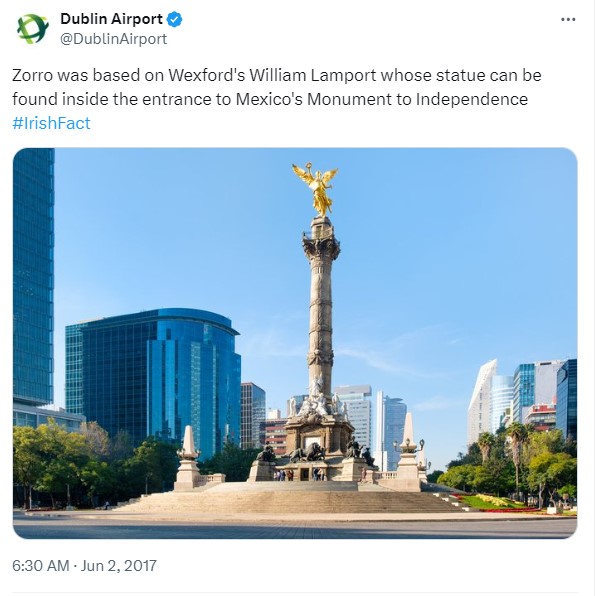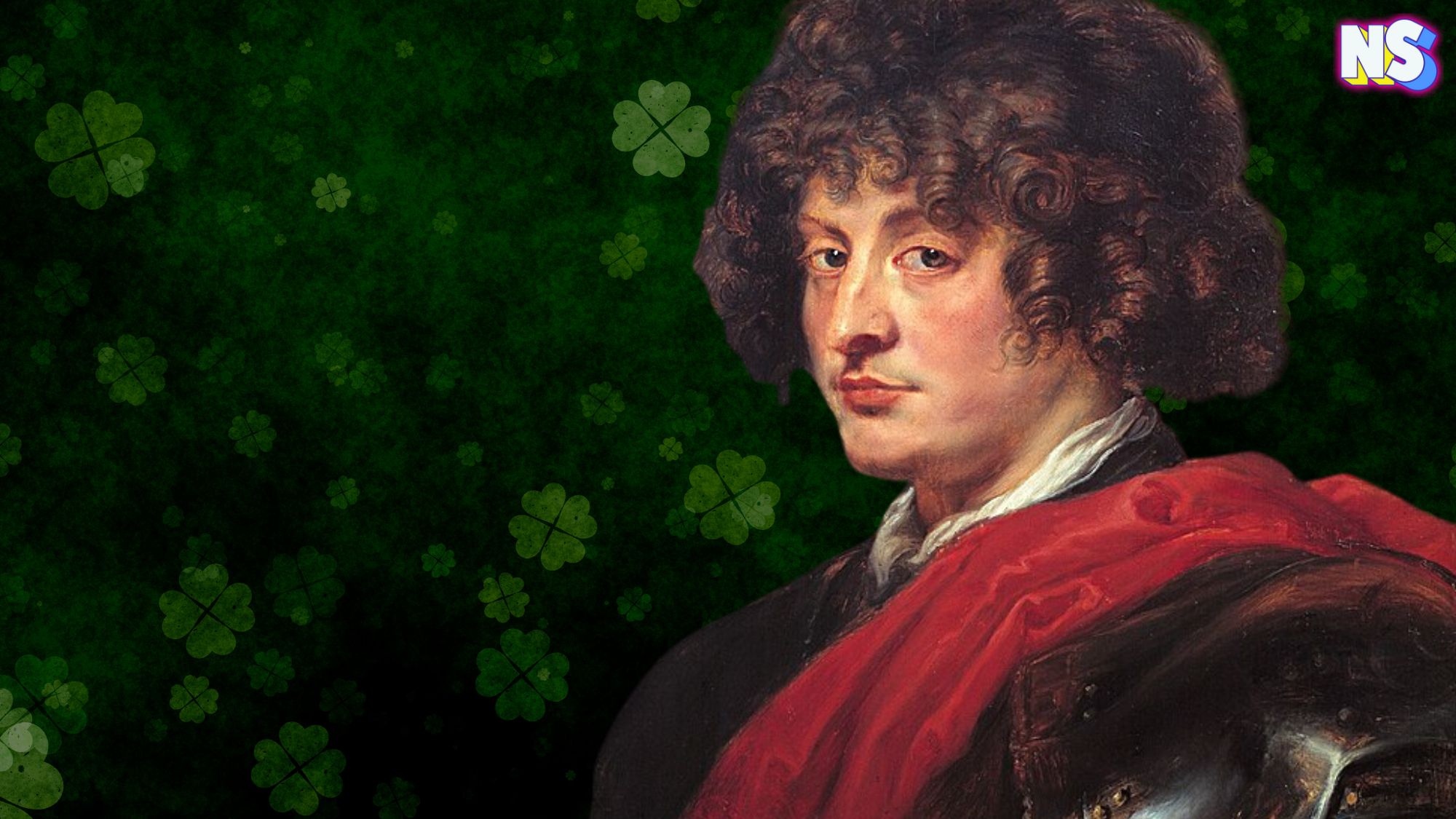Throughout history, swashbuckling heroes have emerged from the shadows. Their exploits are made up of daring escapades and justice served.
One of the best known swashbucklers is the legendary Zorro, — the masked avenger who fought for the oppressed and served as an inspiration for Batman. But there's a debate about his origin story.
“Zorro is fiction. Don Diego de la Vega, the true identity of Zorro, was a product of the pulp fiction writer, Johnston McCulley (1883–1958),” Medium explains.
However, some say he was not a fictional creation at all. In fact, many believe that, not only was the real Zorro a flesh-and-blood figure, but he was actually an Irishman in Mexico.
“Think ‘Zorro,’ and your brain tends to conjure up the image of a Mexican action hero complete with flashing eyes, swishing sword and swashing buckles,” The Irish Times writes. “So it may come as something of a shock to discover that the real-life figure … was actually an Irishman by the name of William Lamport.”
In honor of Saint Patrick’s Day, I invite you to meet William Lamport, the Irishman behind the mask, known as the Irish Zorro.
The Origins of the Irish Zorro
William Lamport was born sometime between 1611 and 1615 in the port city of Wexford, Ireland. He was a Catholic in a Protestant nation, which eventually caused him to flee to Northern Spain. By the time he finished his studies, he was fluent in Spanish, Latin, and Greek.
In the early 1630s, Lamport joined a Spanish-sponsored Irish regiment and battled Swedish forces in the Spanish Netherlands. His valor caught the eye of the Count-Duke of Olivares, chief minister to Philip IV of Spain.
“Perhaps because of Lamport’s fluency in a number of languages, Olivares sent him to Mexico in 1640 to spy on the new viceroy, suspected of not being tough enough on criollos who were fomenting rebellion against their Spanish rulers,” The Irish Times explains.
The Masked Avenger
In Mexico, Lamport was known as Don Guillén de Lamport (or Lombardo) y Guzmán. He not only changed his name. He changed his mission.
“Lamport was shocked by what he sees in Mexico. The slaves and the Indians were the majority of the society they were very poor, very exploited and, in many cases, killed,” Professor Fabio Troncarelli explains.
His new mission was to free Mexico’s indigenous people and black slaves from oppression. His audacious plan involved rebellion against the Spanish crown, with the aid of creole merchants, indigenous allies, and black communities. But he was betrayed.
The Inquisition’s Grasp
Lamport’s dream of justice collided with reality. A man he hoped to recruit for his cause denounced him, and betrayed him.
“He was later arrested and put on trial by the Inquisition and they reveal an intriguing detail about Lombardo's life. He is not Mexican or even Spanish; he is Irish,” the Smithsonian Channel explains. “ … It's from The Trial record that Riva Palacio writes his popular novel that might have led to the inspiration of the character of Zorro.”
He briefly escaped from prison, but was arrested once again. Then, for 17 years, the Irishman languished in the dungeons of the Mexican Inquisition, accused of sedition.
“The novel by Palacio y Guerrero narrates the many remarkable adventures of Lamport and how he attempted the raise a rebellion against Spanish rule in Mexico,” the outlet DailyHistory explains.
Lamport was executed in 1659. However, this horrible end did not silence his legacy.
The Legacy Lives On
Among the underprivileged and the Franciscans, his name became synonymous with resistance.
His fate mirrored that of Zorro — a masked hero fighting against tyranny.
Today a statue of Lamport stands inside the Angel of Independence monument in Mexico City, a silent tribute to the Irishman many say is the real-life Zorro.





